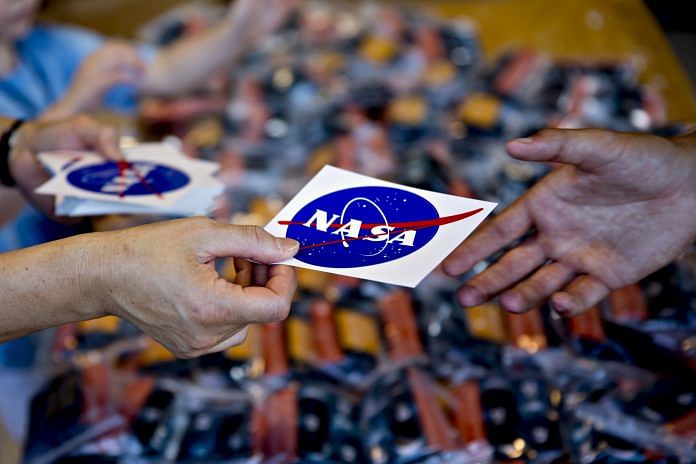Alabama student names NASA’s Mars helicopter ‘Ingenuity’
NASA’s Mars helicopter — destined to be the first aircraft to attempt powered flights on another planet — has been named ‘Ingenuity’.
The name was picked during NASA’s “Name the Rover” essay contest. From among 28,000 submissions, the entry by Alabama high school student Vaneeza Rupani Alabama was selected.
Ingenuity will ride to Mars attached to the belly of the Perseverance rover, which is preparing for launch in July or August this year. For several months following the rover’s landing, Ingenuity will remain encapsulated in a protective cover to shield it from debris during entry, descent and landing.
When the timing in the rover mission is right, Ingenuity will be deployed to stand and operate on its own on the surface of the red planet. If the two kg, solar-powered craft — a combination of specially designed components and off-the-shelf parts — survives the cold Martian nights during its pre-flight checkout, the team will proceed with testing.
If successful during its experimental flight test window of 30 Mars days, the small craft will prove that powered flights can be achieved on Mars, enabling future missions to better utilise second-generation helicopters and add aerial dimension to explorations. More about it here.
Also read: A trove of Viking-era artefacts and an ocean creature that may be the world’s largest animal
Fossils reveal first known aquatic dinosaur
Scientists have for the first time found evidence which shows that Spinosaurus aegyptiacus, the longest known predatory dinosaur, was an aquatic animal.
Researchers have long opposed the idea that dinosaurs lived in aquatic habitats.
A team from the University of Detroit has now found that the particular type of dinosaur used tail-propelled swimming locomotion to hunt for prey in massive river systems.
It is the first time that such an adaptation has been reported in a dinosaur. The findings are based on the world’s only existing Spinosaurus skeleton, found in the Sahara Desert in Morocco. The fossil unearthed is also the most complete skeleton of a cretaceous predatory dinosaur from mainland Africa.
The skeleton was first uncovered in 2008. In a previous study, Spinosaurus were identified as fish-eating dinosaurs with adaptations for an amphibious lifestyle.
However, suggestions that it may have been a truly water-dwelling dinosaur were met with considerable opposition by some researchers. Between 2015 and 2019, the team recovered many more fossils of the skeleton, including a remarkably complete, fin-like tail that is capable of extensive lateral movement and characterised by extremely long spines. Read more about it on the National Geographic.
Highest ever concentration of microplastics found on seabed
Researchers have recorded the highest ever level of microplastics on the seafloor, with up to 1.9 million pieces in a thin layer covering just 1 square metre.
Over 10 million tons of plastic waste enter the oceans each year. However, less than one per cent of this consists of plastic drinking straws and carrier bags.
About 99 per cent ends up as tiny fragments and fibres deposited on the seafloor. Deep-sea ocean currents act as conveyor belts, concentrating microplastics within huge sediment accumulations, called ‘microplastic hotspots’.
These hotspots appear to be the deep-sea equivalents of ‘garbage patches’ formed by currents on the ocean surface.
Microplastics on the seafloor mainly comprises of textile fibres. These are not effectively filtered out in domestic waste water treatment plants, and easily enter rivers and oceans. More about it on CNN.
Small asteroid zooms past Earth, closest flybys ever recorded
A 4-8 metre sized asteroid, named 2020 HS7, recently flew past earth, passing close to satellites orbiting in the geostationary ring. The asteroid flew at a distance of about 42,735 km from the earth’s centre and only about 1,200 km from the nearest satellite.
After the initial discovery, observers around the world rapidly set their eyes on the ‘new’ space rock, determining it would safely pass our planet in one of the closest flybys ever recorded.
While the asteroid came close to the geostationary ring, it passed ‘under’ the nearest satellite and posed no major risk as their orbits did not intersect. Read more about it here.
Huge amounts of methane leaking from US oil fields
Permian Basin, the largest oil-producing area in the US, is spewing more than twice the amount of methane emissions into the atmosphere than previously assumed.
A study by researchers at the Harvard University has revealed that the area wastes enough energy to power seven million households in Texas for a year.
The Permian Basin accounts for over a third of the crude oil and 10 per cent of the natural gas in America.
The study also found that the rate of methane gas leakage makes up 3.7 per cent of all the gas extracted in the basin, which is about 60 per cent higher than the national average leakage rate.
Methane is a potent greenhouse gas, and since the Permian Basin is huge, this excess waste is a significant contribution to the already warming climate in earth. Read more about it here.
Also read: Evidence of brain surgery in ancient Greece, a sharp spike in methane emissions in 2019







Why you hate India so much.. instead of writing Indian origin student you wrote albama student shame on you print